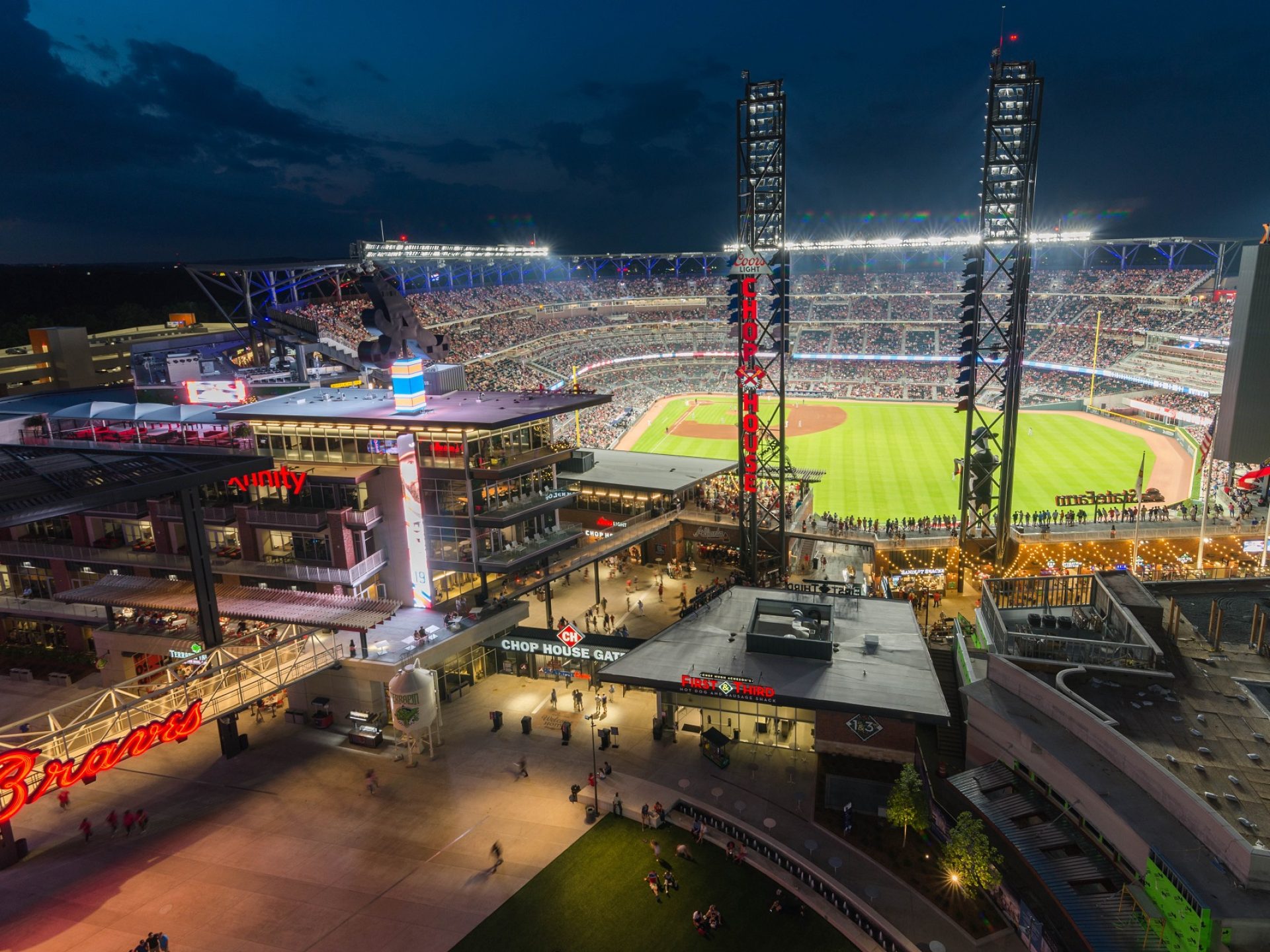May 10, 2018
How Flexible Seating Options Create New Revenue Streams

This article originally appeared in the May 2018 issue of Athletic Business
What do fans want?
Architectural firm Populous recently commissioned a report by Nielsen that surveyed a cross-section of fans who had attended at least three live games or events in the past year. What the survey found suggests the game itself is only a part of the equation and at times nothing more than a mere backdrop to time spent with friends and family. Fans now want multiple experiences at any given venue, with 9 in 10 respondents saying they would be more likely to buy a ticket that provides a unique experience in three separate locations during the event.
The implications of these kinds of insights for venue operators are staggering, involving not only a rethinking of business models but an overhaul of the seating paradigm. In most cases, a single venue must cater to fans of different sports with wildly different amenity and sightline preferences. For instance, NBA fans want courtside seats, while most NHL fans surveyed said they want a bird’s-eye view of the action on the ice. How can these differing preferences be reconciled?
Jason Carmello, an associate principal at Populous, hopes an innovative seating concept will allow operators to meet changing fan preferences and realize new revenue opportunities. “Flexibility is the number-one demand we’re seeing in arenas right now and how to use that flexibility to get return on investment,” Carmello says. To that end, Populous is developing a concept called ‘transformable seating’ which provides operators the best of both worlds. “It allows [facility owners and operators] to draw people to two types of environments, while only really investing in one.”

The solution involves converting a section of a stadium or arena to a bank of seats that when retracted gives way to a pop-up club of sorts. “Once the seats are retracted, you’ll just need to set up the club or the stage, which can be quite flexible,” Carmello explains. “This transformation can take place in a couple hours.”
Retracting an entire section cuts down on the number of available ticketed seats, but it also opens up new revenue streams that will hopefully attract not only new customers but new types of events to the venue. “For operators, the more flexibility and opportunities that can be created within the seating bowl, the better chance there is for booking the top-tier shows,” Carmello says.
Let the kids roam
Families are the perfect example of a demographic that can be accommodated with the transformable seating concept. Not only are most parents minding tight budgets, they’re also concerned with ensuring that their kids have plenty to do beyond sitting quietly in a seat through nine innings of baseball.

According to the Nielsen survey, one in four respondents take their families with them to sporting events a majority of the time. When they do, they want amenities that are unique to families, such as play areas, changing stations, pumping rooms and even babysitting services. As part of the Populous transformable seating solution, the firm came up with the “Family Lounger Box,” a loge-level seating option that offers family-centric conveniences. Those surveyed said they would be willing to pay an average of $130 extra for this type of seating arrangement. Perhaps most notable, this approach places a premium on space in historically low-revenue sections of the venue. Carmello says the real value of transformable seating is impermanence — the fact it can be changed to suit the event and the crowd.
Emphasis on the experience
More modern arenas and stadiums are upending available row-seating in favor of open spaces, where the ROI is hidden in the attraction of more fans who will spend extra on additional amenities. In 2014, TIAA Bank Field (formerly EverBank Field), home of the Jacksonville Jaguars, transformed underperforming seating inventory in its north end zone into a giant party deck, including two swimming pools with pool-side cabanas where guests can cool off and socialize while enjoying the game.

In Atlanta, the Braves’ SunTrust Park now houses the Coors Light Chop House and Terrapin Taproom, which offers authentic Southern barbeque and a variety of craft beers brewed onsite. The idea behind these types of spaces is that the ticket becomes more than renting a two-foot-square piece of real estate from which to view the action on the field. Instead, you’re paying to enjoy a few hours at a place that just happens to offer perfect vantage of the big game.
Read Athletic Business’ full coverage of flexible seating options.
Lorem ipsum dolor sit amet consectetur, adipisicing elit. Non facere corporis et expedita sit nam amet aut necessitatibus at dolore enim quis impedit eius libero, harum tempore laboriosam dolor cumque.
Lorem, ipsum dolor sit amet consectetur adipisicing elit. Illo temporibus vero veritatis eveniet, placeat dolorem sunt at provident tenetur omnis, dicta exercitationem. Expedita quod aspernatur molestias eum? Totam, incidunt quos.